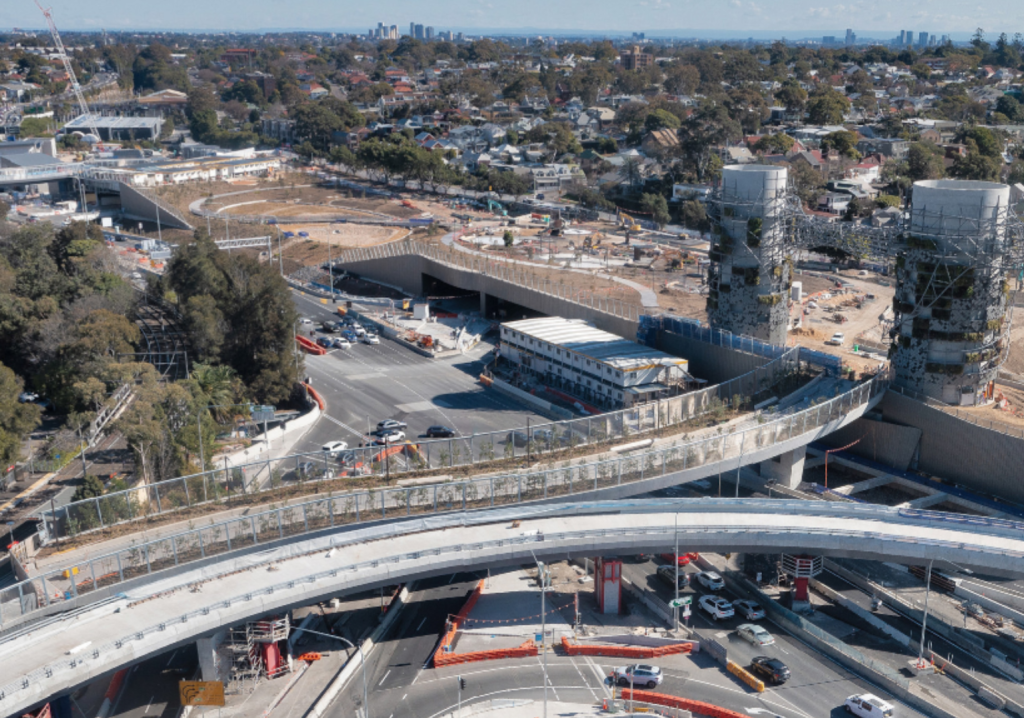The design manager plays a crucial part of any engineering project, but can often go unrecognised. Is it time for it to become an engineering discipline in its own right?
What do recording a song and designing a building have in common? Design manager and wannabe rock star Rick Hopkins FIEAust sees many similarities.

“Think of each instrument as a separate discipline,” Hopkins told create. “When we’re in the rehearsal room and coming up with our separate parts, each player must be aware of what the others are doing.
“This ‘spatial coordination’ of instruments is the same way we coordinate disciplines on a project. The producer sits over the top, makes sure the parts … all fit together – just like a design manager!”
Hopkins, who has previously worked with Aurecon and Mott MacDonald in senior technical and engineering management roles, believes there is a basic piece missing for successful project delivery – the recognition of design management as a discipline in its own right.
Project MVP
“In any program or project that I’ve been involved with, the design manager is probably the most important person,” said Michael Bridger, National Defence Manager at Hansen Yuncken. “I want someone who can understand and foresee problems that could arise – issues a typical architect or engineer is not going to see. So, they need to be across all disciplines.”
Bridger has seen first-hand the impact a design manager can have on a project.
“We had a project where the architect was proposing a design for the Defence Force and their motivation was to win an award,” he said. “The design manager brought the project back to the client’s core needs as they understood the requirements, budgets and timeframes.

“They held the architect to account, telling them to ‘go back and start again – delete that section, amend that one’.”
Bridger is convinced that design management cannot be taught but must be learned over time.
“The best way to develop this expertise is to fail,” he said.
Academic and industry experience
Western Sydney University (WSU), which has been running a Building Design Management course for the past eight years, adopts a different approach.
“We appreciate the importance of design management as a discipline,” said Dr Brendan Kirkland MIEAust, Director of Academic Programs.
“WSU is the only Australian university offering an undergraduate program in building design management,” he added. “We approach the course from the point of view of the principal contractor involved in a design and construct contract.”
Students learn specific skills related to design management – including formulating a design brief, design processes, heritage considerations and project documentation – while concurrently learning how to manage construction projects.
“They are also encouraged to seek building cadetships during their studies to run their program in parallel with industry training,” Kirkland said. “Ideally, they will progress their career with a contractor, taking up graduate positions like design administrator or design coordinator on the path to becoming a design manager,” Kirkland said.
On-the-job learning
Design management skills are also developed outside the classroom. Jessi Bolton EngExec, Technical Director, AECOM, believes some people have a natural tendency towards design management.
“Sure, people benefit from a technical background for this role, but there’s another facet that can be nurtured through being an understudy,” Bolton said. “Much of it is on-the-job learning.”
It’s not just universities, professional bodies too can play a big role in developing the field of design management.
“I think educational institutions have a supporting role, but learned engineering institutions like Engineers Australia can have an even bigger role in fostering rounded engineers,” explained Jonathan Richardson CPEng, Director at MCE. “If you’ve got a well-rounded engineer, they can be a great design manager.”
Richardson studied civil engineering in the UK where he started his career as a site engineer working for Laing O’Rourke.
He complemented his site-based technical skills through an exchange with design engineers Arup. The exchange was strongly encouraged by the Institution of Civil Engineers (UK) as part of the route to becoming Chartered.
For 18 months, he worked as a design engineer at Arup and that gave him a deep appreciation of that role and a further understanding of the process and skills required to bring a successful design together.
Returning to construction, Richardson settled into design management where he was able to bring the design and delivery together. The program worked as an exchange, with Richardson’s construction job being done by a seconded engineer from Arup.
“As luck would have it we’re now colleagues and we both do design management,” he said. “He started from a design role, I started from the construction side of things but we both do complex design management now.”
This exchange-based development approach is quite embedded in the UK and Richardson would like to see it encouraged by employers and institutions in Australia as well.
From his personal experience it is a positive pathway to becoming an effective design manager with an appreciation of the cost, program, safety, quality and procurement dimensions of design, as well as pure technical coordination.
Design or project
Hopkins sees some confusion between the project management and design management roles.
“A perfectly competent project manager can oversee the full preparation of a design, run the meetings, facilitate coordination sessions, tick all the assurance boxes and issue the documentation,” he said.
However, he added, project managers might not be entirely across what has actually been designed. It might not be clear to them when a design is unbuildable or contains errors and clashes.
The design manager is the generalist and given a broad remit.
“They need to have sufficient understanding of each discipline to read the overall picture and spot the critical interfaces. They need to see problems the specialists can’t see, get people talking to each other and build consensus,” Hopkins said.
In a simplistic sense, a project manager is responsible for budgets, overall schedule, risk management and contracts, according to Austen Shoebotham, Business Leader, Civil Infrastructure NSW, Arcadis.
“A design manager is more focused on the technical coordination and integration of different disciplines and ensuring that a cohesive single design is presented at the end,” he said.
Arcadis clearly separates the roles of design and project management in most cases.
“I think there are some individuals who through their skill sets are able to do both roles on small projects, but that’s probably the exception rather than the rule,” Shoebotham said.
“Design management for us is very much about delivery of the design, to a technical quality standard that meets the client’s needs. And conforms to all the latest design requirements with quality-assurance built in.”
Taking a broader view
It is widely acknowledged that design management is a challenging role requiring a high degree of proficiency in both technical and process or management elements.
“The technical aspect is the harder part to learn,” Hopkins said. “The best design managers have mastered a technical discipline in the first 10 years.
“This provides them with a good understanding of how a building or other piece of infrastructure fits together and some coverage of every other discipline.”
Shoebotham too acknowledges the critical role played by multidisciplinary design managers and considers them the most valuable people in the team.
“They are fundamentally the difference between a successful project and an unsuccessful one because they control the impulses and more selfish behaviours in different disciplines,” he said. “They help the client achieve the outcomes they want, even though it might involve pushing back.
“The client might think ‘x’ is the best way to achieve their objectives, when there is a better way to accomplish that.”
The recognition they deserve
While project management is currently a recognised discipline in the industry, Hopkins would like to see design management similarly and separately recognised and supported.
And while there are codes that provide guidance, the industry could create a simple methodology to enable a consistent and intuitive approach to the full timeline of multi-discipline delivery.
Shoebotham said he can often trace back all Arcadis’s most successful projects to an excellent design manager doing a great job.
“A good example is the Sydney Gateway project, which had excellent design management,” he said. “That really helped achieve the desired outcomes.
“Conversely, instances where we’ve faced issues can often be when we haven’t had the right person in that role.”
